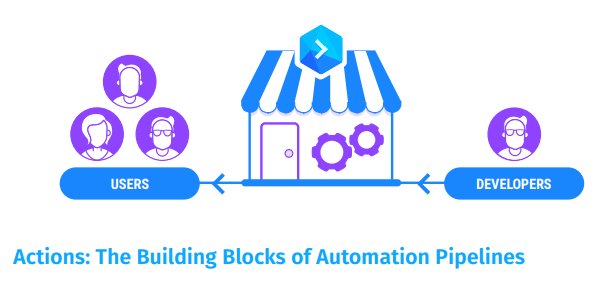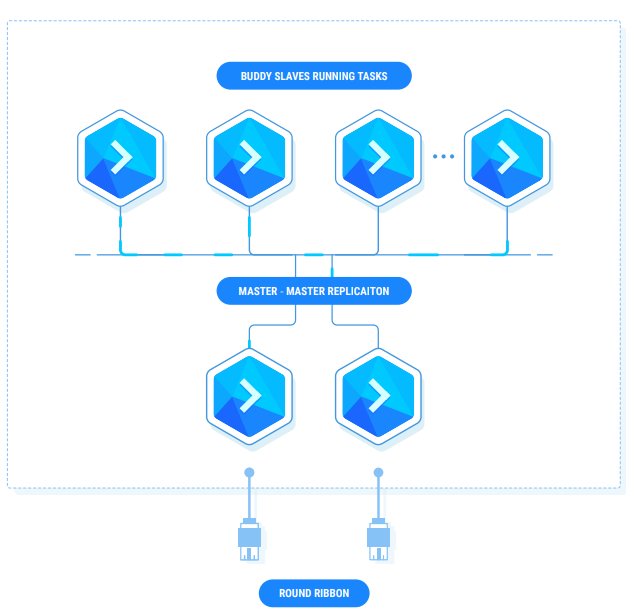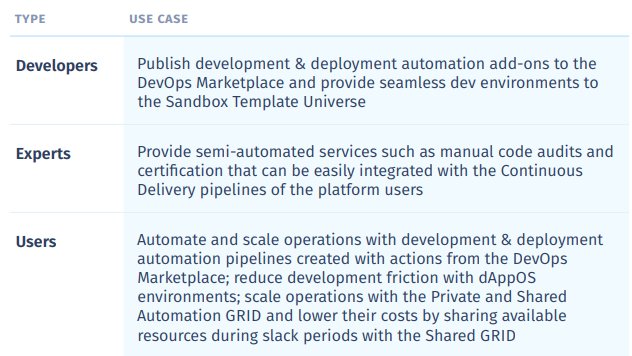Buddy - Application development automation re-engineered


Overview
Application software development is perhaps one of the fastest-growing industries in today's IT world. Valued at $110 billion and with thousands of apps developed and deployed each day, application software development is already big business, but the industry has enormous challenges too. The challenges include bogus and out-of-date application development tools, langauge barrier among heterogenous software teams, application development complexities, conflicting goals, inadequate training and lack of development infrastructure. These are huge problems fighting to wrestle down the giant software application industry.
Because of these hurdles, organizations are limited on the number of tests and applications they can run each day. This in turn, limits the potential output and growth of these organizations. In the face of all these challenges, it seems that traditional sotware development methods are the only way to go. But then, Buddy comes to the rescue!
Buddy is an out-of-the box innovative solution to the many challenges facing the application software development industry. It is a decentralized application development toolbox designed to help developers focus on the creative aspects of application development while the platform automates the complex and resource-draining job of developing the application software backbone. In this article, we will take a serious look at how Buddy created the first apps development marketplace and changed the conventional apps development workflow. We will see why a growing number of respected brands worldwide are already using Buddy to automate their app development strategy.
The video below provides more background insight into how Buddy works and what makes it a truly unique platform for apps development.

How does Buddy solve the major challenge facing the application software industry?
The problem: Many organizations run their own centralized app development infrastructure. These are very complex development environments on which every test is done. Because of the vast number and nature of software test conducted on these platforms, they require non-stop maintenance, are very costly to set up and are big complicated tools in themselves. So organizations need a more optimized and automated environment to take care of repetitive and complex apps development operations and free up time for creative and designing aspects of the job.
Buddy provides app development solution in 3 ways to allow users choose what fits their business objective best. We will take a look at them and why each of them is special:

Understanding The Buddy solution.
Solution 1: DevOps Automation Marketplace.
Everyone Android user is familiar with Playstore and we love it. iOS users know the Appstore. Millions of apps are available in one place, giving users the ability to download and install apps of choice with a click.
Imagine the limitless opportunities that will open up for app developers if given access to a "house" full of developers, developer tools and all the plugin scripts needed to build an application. That is what Buddy offers in the automation marketplace.

Source: Buddy Whitepaper page 9
The automation marketplace fully equips developers with all the app development plugins and scripts needed to complete a project. Application software development usually involve processes like performance monitoring, visual testing, security evaluation, etc. These are essential processes that app development passes through. In the automation marketplace, these processes are called actions. So the marketplace comes pre-loaded with more than 80 actions that users can tap into in due stages of their project. These actions are standalone executable scripts and plugins for app development.
The table below shows a few of the Third-party Actions from The DevOps Marketplace.

Source: Buddy Whitepaper page 10
A single action can run at a time if it was the only one required for that stage of the project. Also, a set of actions can run concurrently. Each single action or a collection of actions are grouped into Pipelines. Each pipeline can contain several actions running parallel to each other. Several pipelines can also run at a time depending on available resources. Actions form the fundamental building blocks for the automation pipeline.
The DevOps Marketplace is open sourced and will allow verified third party developers earn from their work by charging for apps submitted to the platform. So on the marketplace, there are free and premium tools from third party developers. However, it will encourage the continued growth and development of the Buddy ecosystem by requiring developers to allow their work to be used by non-commercial open-source projects. As more and more of these open-source projects implement various projects on the Buddy platform using free and available third-party resources, more projects are executed and more users are attracted to the platform. This contributes to its overall growth.
Use case 1: Securify
Software Reliability Lab owns Securify. This is a free security tool used to run automated safety tests on Ethereum contracts. By means of a website, this security tests is to ensure that Ethereum contracts are free from critical security vulnerabilities and insecure coding. Once Securify is submitted on the marketplace, there will be no need for developers to write a fresh code for security testing as this would already have been taken care of. In this way, app shipping time is faster and the quality of app codes would have improved.

Source: Buddy Whitepaper page 11

Understanding The Buddy solution.
Solution 2: Private Automation Grid.
While Buddy is an app development platform on its own, users can decide to have the same services provided by Buddy available on their preferred hardware infrastructure. Already, many organizations have secure private servers or they already use a trusted cloud service and would prefer to have Buddy on the same environment. If this is what a Buddyclient wants, then Private Automation Grid got them covered.
With Private Automation Grid, Buddy creates series of replica environment or Buddy instances with all the features for apps development and deployment available in them. This private network utilizes auto-discovery and replication capabilities to create High Availability auto-scalable infrastructure for development & deployment automation.
How it works
Each instance of Buddy automatically picks up a role once it appears on the grid - either a master or an agent. The master - master replication creates a High Availability system while the agent is used to run more pipelines in parallel. The first two instances to appear on the network takes up the Master role while subsequent instances automatically takes up the agent role. Though the private grid is an instance of Buddy, it is still under the full control of the original Buddy platform. Buddy is responsible for creating and removing the various instances on the private grid depending on the amount on the load on the grid.

Source: Buddy Whitepaper page 14

Understanding The Buddy solution.
Solution 3: Shared Automation Grid.
This is very similar to Private Automation Grid except for few differences. Some tasks are resource intensive and would otherwise take time to execute on a singular grid. The idea of a shared grid is to unload and distribute complex tasks to other users with the available resources. These users are already on the private grid. These grid of Buddy instances are utilized to relieve the load created by the resource-intensive task. This simple means that the private and and shared grid can work hand in hand to deliver optimum results.
The diagram below shows how the Buddy DAO integrates a private and shared automation grids to work together

Source: Buddy Whitepaper page 10
Shared Automation Grids are especially useful in cases where the project on hand carries little or no confidentiality element. In this case where nothing is being hidden or trust is not an issue, a decentralized network of instances of Buddy can be used to achieve speedy execution of tasks in record time. For example, to simulate a Distributed Denial of Service (DDoS) attack simulation, a private grid could be used to create the app (attack target), while a network of Buddy instances (attackers) could be used to flood the target.
How Buddy instances appear on the Shared grid
Buddy has an in-built P2P network in which new peers report their address on the grid. Nodes on the network can also report the status of other nodes. For example, a node may be unavailable because of any technical reasons. The diagram below illustrates how it works:

Source: Buddy Whitepaper page 18
Shared Grid building block - The Compute Unit
As explained earlier, users can distribute some loads of a resource-intensive task to Buddy instances. The entity that makes this work is called the compute unit. The compute unit is thought of as a node of the Shared Automation GRID. Each unit has the following specifications: 2 vCPUs, 2GB of RAM and 4GB of SSD storage. This is the specification of a standardized vCPU and only instances that comply with this standard are accepted on the grid.

Source: Buddy Whitepaper page 19
A user requests instances by indicating how much he is willing to pay. Once a supplier agrees, the job is done and payment is made at the point of job completion. The requester pays using his BUD token(per second billing). The storage is immediately released to the supplier for other transactions after the job is done.
Suppliers are required to keep Requesters fully informed by providing their relevant service information. This includes the number of Compute Units to assign, the price they charge and when they are willing to trade.
How Buddy creates demand for Shared Grid Compute Units
Buddy does this by employing a system where entire projects or aspects of projects can run concurrently. This system is called 3-layer parallelism system. Here, projects are run in a pipeline and could be split down to actions and tasks that execute at the same time. This creates a demand for compute units as several users execute several projects or parts of them simultaneously. Consider what happens in each layer:
Project Level:
Here, multiple pipelines can run concurrently depending on the number of availabe compute units. Each pipeline uses 1 compute unit. For example, running 5 pipelines requires 5 compute units.
The image below shows 2 pipelines running on 2 Compute units.

Source: Buddy Whitepaper page 20
Pipeline Level
Here, multiple actions can run concurrently. Each action requires a compute unit. For example, running 2 pipelines and 2 concurrent actions would require 4 Compute units.

Source: Buddy Whitepaper page 21
Action Level
Actions can still be split into individual tasks running in parallel. For a system running Running 2 pipelines with 2 concurrent actions with 2 tasks each, 8 Compute units would be required.

Source: Buddy Whitepaper page 19

Buddy Solutions for Blockchain-based projects
The challenges that face app development companies also affect blockchain-based projects and Buddy thought in that direction too. So blockchain-based projects can benefit from development automation to enhance quality projects and improve development time. We take a look at some of the Buddy automation solutions for blockchain developers:
1. BlockchainOps
This just like the automation marketplace for app software developers, the BlockchainOps is a complete toolbox for blockchain developers. Here, developers can choose from already made actions (standalone plugins and scripts) for each stage of their development project. It includes actions for code testing, stress evaluation, dApps monitoring, etc. So instead of writing custom codes to conduct tests manually at each stage of a blockchain based project, developers can focus on more creative aspects of the development. This will not only save time and improve efficiency, it will enhance the development workflow.
Currently, BlockchainOps can be easily integrated into the EOS network. Click here to read an article on Medium that explains DevOps & EOSIO Smart Contract Integration. More blockchain technologies would be added to the Buddy platform as further work and research is being carried out by the Buddy team.
2. dAppOS
dAppOS is a development environment designed to assist blockchain-based apps development. It merges front-end and backend stacks with trust logic residing on a Blockchain. dAppOS is very useful development environment as it can expand to include such services as MySQL, Redis, etc.

dAppOS is expansive and has a wide range of applications that includes the following:
Development, Preview or Staging Environment: Here, dAppOS can operate as an independent platform or can be assigned to a branch with all the services and tools required for the testing. Hence, each branch can have an automated completely independent stack for its operations.
A Training Tool: Buddy utilizes to completely simply blockchain education. Much concentration is focused on the actual blockchain development training since the training platform has already been set up and automated. No time is wasted on developing the training environment first.
dAppOS universal template: dAppOS creates a universal standard - a sort of template - for testing and exploring blockchain technologies. This enhances efficiency in DApp development as it provides a kind of "plug and play" marketplace for Sandbox & dAppOS templates.
dAppOS Swarms: dAppsOS reflects the true decentralized nature of Buddy because it can be spinned from various locations all over the world utilizing the shared automation grid. dAppOS Swarms are destroyed immediately after the completion of task execution. This is a cost-effective solution for start-ups and enterprises with small budget looking to embrace blockchain-based projects.
These are some of the ways that dAppsOS can be beneficial for blockchain-based development.
3. Distributed Blockchain-as-a-Service: This is the third solution from Buddy for blockchain-based projects. Buddy has created a beneficail service for blockchain-based developers. With the shared automation grid and the capability to extend it via creating Buddy instances, a huge distributed global network can be formed to enable developers anywhere to tap into this invaluable resource pool and executed their projects.

The BUD token
BUD is a utility token based on Ethereum (ERC20). It creates a community-driven, decentralized economy in Buddy, the application development automation platform made for developers by developers.
Buddy offers it's Bud token to 3 classes of users. The chart and table below illustrates what each category of users does in the Buddy platform:



Conclusion
Buddy is a truly unique solution that wants to disrupt the $110 billion app software market. It creates a large blockchain-based resource pool that experts, users and developers can draw from. It contributes to swift apps development, efficient workflow, secure app code and overall improved app quality. If properly utilized, Buddy can become a revolution and the next big thing to pioneer mass adoption of blockchain technology.

Buddy Team


Get first-hand information about Buddy Here
Buddy Website
Buddy WhitePaper
Buddy OnePager
Buddy Token Sale
Buddy YouTube
Buddy BitcoinTalk
Buddy Facebook
Buddy Telegram
Buddy Linkedin
Buddy Twitter
Buddy Medium
Buddy Github


This post has been submitted for the @OriginalWorks Sponsored Writing Contest!
You can also follow @contestbot to be notified of future contests!
I agree with the author, @mememe23!